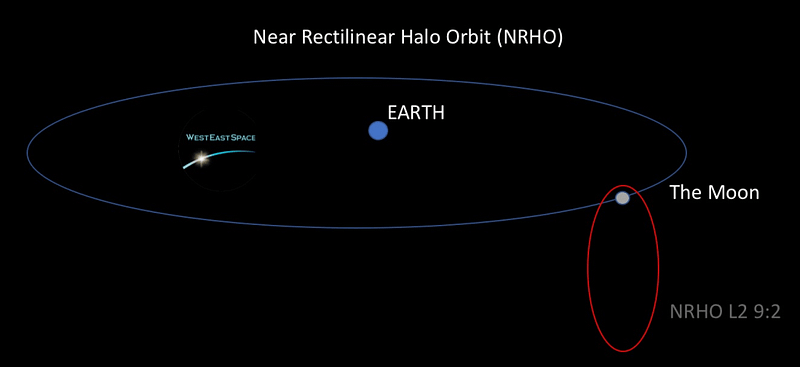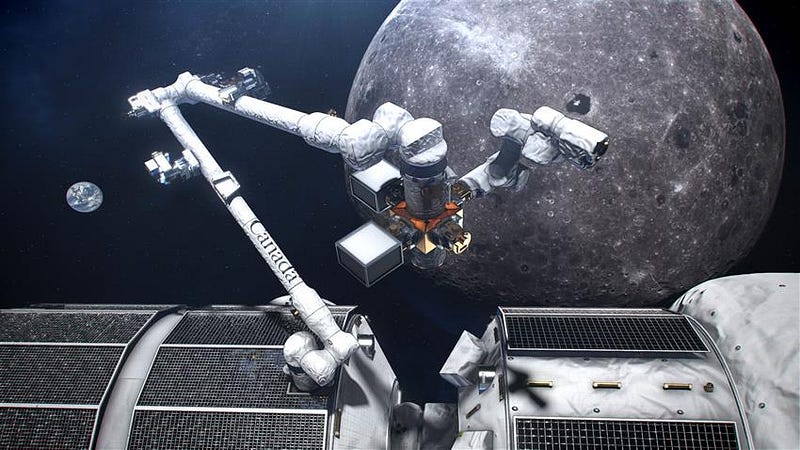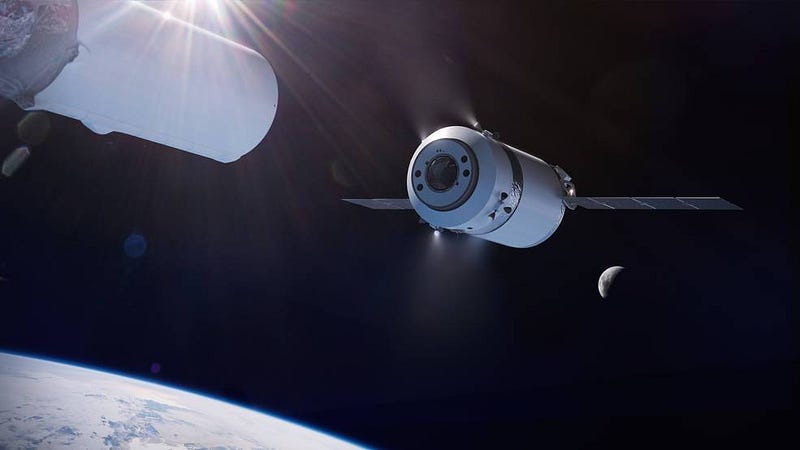SpaceX Collaborates with NASA for Lunar Gateway Missions
Written on
Chapter 1: NASA's Lunar Gateway Initiative
NASA may have temporarily set aside the Lunar Gateway for upcoming Moon missions, but the agency's progress remains robust. Recently, NASA granted multiple contracts for the Lunar Gateway, including a significant one to SpaceX. This move highlights the increasing capabilities of emerging space companies in securing contracts and executing missions.
“ This contract award is another critical piece of our plan to return to the Moon sustainably. The Gateway is the cornerstone of the long-term Artemis architecture, integrating yet another American industry partner into our plans for human exploration at the Moon in preparation for a future mission to Mars, ” said NASA Administrator Jim Bridenstine in a press release regarding the award to SpaceX.
Section 1.1: The Artemis Gateway Logistics Services Contract
NASA has officially awarded SpaceX the inaugural Artemis Gateway Logistics Services (GLS) contract. This contract entails resupplying the Gateway by transporting goods to a Near Rectilinear Halo Orbit (NRHO). If you're unfamiliar with NRHO, it's a highly elliptical orbit that takes approximately seven days for each complete rotation. For further information, check out: Near Rectilinear Halo Orbit (NRHO). Among various NRHO options, NASA seems to favor the L2 9:2 lunar synodic resonant southerly Near-Rectilinear Halo Orbit (NRHO), which is likely where the Lunar Gateway will be situated.

Section 1.2: Delivery Logistics and Robotic Assistance
Cargo and payloads will be sent to the Gateway in NRHO above the lunar surface, utilizing the Logistics Module (LM) for transportation. For those familiar with the Apollo Missions, it’s worth noting that the acronym LM may be slightly misleading, as it previously referred to the “Lunar Module” (originally shortened from LEM, or “Lunar Excursion Module”).
Based on the 2019 NASA draft RFP document (GLS-RQMT-001), the LM is tasked with delivering at least 3,400 kg (7,496 lb) of pressurized payload and cargo to the Gateway per mission. Additionally, it is expected to transport a minimum of 1,000 kg (2,205 lb) of unpressurized cargo and payloads as well. A proposed Canadian robotic arm, known as Canadarm3, is designed to assist in unloading unpressurized cargo. Unlike its predecessor, the ISS Canadarm2, which was 1,497 kg and 17 m long, the Canadarm3 will be more compact at under 900 kg and 9 m, making it suitable for the smaller Lunar Gateway.

Chapter 2: Dragon XL and Future Missions
The LM is expected to autonomously rendezvous and dock with the Gateway as a Visiting Vehicle (VV), similar to the advanced docking techniques currently in use for the International Space Station. The RFP specified that the LM should remain docked for up to three years without crew intervention, power, or environmental controls. However, the NASA award announcement indicated that the cargo spacecraft would only need to stay at the Gateway for six to twelve months at a time.
Meet Dragon XL

SpaceX intends to utilize the newly unveiled Dragon XL to fulfill the Logistics Module's requirements. “Returning to the Moon and supporting future space exploration demands cost-effective transportation of substantial cargo. Through our partnership with NASA, SpaceX has been delivering vital supplies to the International Space Station since 2012, and we are thrilled to extend this collaboration beyond Earth's orbit to transport Artemis cargo to the Gateway,” stated SpaceX President and COO Gwynne Shotwell in a NASA press release from March 2020.
SpaceX will deliver essential pressurized and unpressurized cargo, scientific experiments, and supplies to the Gateway, which include materials for sample collection and other necessities for crews on the lunar surface. The contracts for these deliveries are firm-fixed-price, indefinite-delivery/indefinite-quantity agreements, guaranteeing at least two missions with a maximum total value of $7 billion. NASA can order missions under the Gateway Logistics contracts for up to 12 years, with a performance window of 15 years, allowing for the inclusion of additional competitive providers.
These missions will bolster NASA's objectives for sustainable exploration, collaborating with both international and commercial partners while honing the skills and capabilities necessary for future human missions to Mars.
“This marks an exhilarating new phase for human exploration. We're integrating innovative commercial industry ideas into our supply chain to ensure that crews preparing for lunar expeditions receive the necessary supplies in advance,” remarked Mark Wiese, Deep Space Logistics manager at NASA's Kennedy Space Center.
Given SpaceX's extensive experience with cargo deliveries to the ISS, the decision to use their services seems sensible. The upgraded Dragon XL is anticipated to utilize a Falcon Heavy in expendable mode for high-energy transfers. However, calculations from the NASA Performance Vehicle Estimator suggest that the Falcon Heavy in recoverable mode may not suffice for transporting the current Crew Dragon along with its payload to the Gateway.
SpaceX, known for its preference to avoid discarding rockets and spacecraft, may be considering three potential options. Firstly, Dragon XL might need to be refueled in orbit, akin to the future Starship. Secondly, it could be equipped with a high specific impulse (ISP) electric propulsion system to enhance its delivery capabilities. Lastly, SpaceX might launch the Dragon XL inside a Starship and subsequently utilize Dragon XL with fewer modifications. Only time will reveal the final strategy SpaceX and NASA will adopt.
The first video provides an in-depth look at how SpaceX and NASA plan to land on the Moon, discussing the technologies and strategies involved.
The second video explores why SpaceX still relies on NASA for lunar missions, highlighting the collaborative dynamics of their partnership.